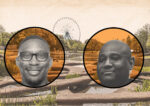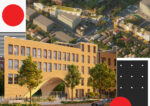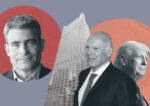Dallas is moving forward with a controversial land-use plan that will reshape the city’s single-family neighborhoods for years to come.
The Dallas City Council voted 11-4 this week to approve an amended version of ForwardDallas, marking the culmination of months of back-and-forth over the future of the city’s growth and development, WFAA reported.
The plan, which replaces the 2006 version of the city’s land-use plan, aims to address housing affordability and neighborhood preservation. However, much of the controversy stemmed from the plan’s allowance for increased housing density in single-family neighborhoods, a topic that has dominated discussions since its proposal.
Proponents of the plan, such as Adam Lamont, co-founder of local nonprofit Dallas Neighbors for Housing, argue that allowing more housing options is essential to tackle the city’s growing affordability crisis.
“Housing is our biggest issue as a city, and it’s the one that we need to focus on the most,” he said.
However, critics of the plan, such as Dallas resident Marilyn Moore, argue that such developments could increase traffic and negatively impact property values.
“There’s plenty of areas in Dallas where they can build townhomes and duplexes that are not within a single-family neighborhood,” she said.
Under the ForwardDallas 2.0, townhomes and duplexes can be designated as primary uses, which means they can be built in single-family neighborhoods.
However, several amendments were put in place to protect the character of these neighborhoods, such as triplexes being excluded from consideration as a primary use. Complexes with up to eight units can still be built but only as a secondary use, requiring justification from city planners and subject to additional scrutiny.
Another amendment specified that high-density developments like multiplexes, townhomes and duplexes that don’t fit the character of single-family neighborhoods should be located outside of these areas. Further amendments recommend placing multiplexes along major roads, rather than on residential streets, and encourage visual buffers between single-family homes and more intensive developments nearby.
“The final version of Forward Dallas 2.0 is exactly what it should be — a compromise where everyone feels a bit dissatisfied but can live with the results,” Councilmember Chad West said.
— Andrew Terrell
Read more







